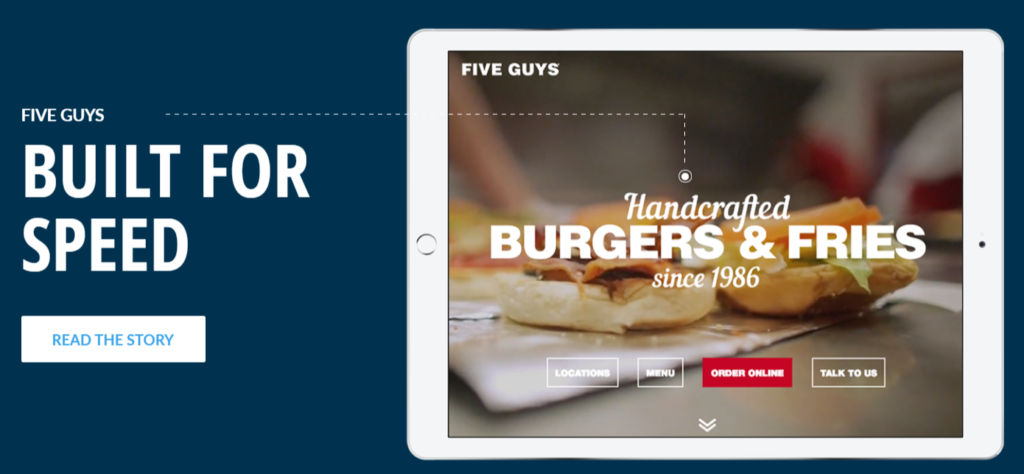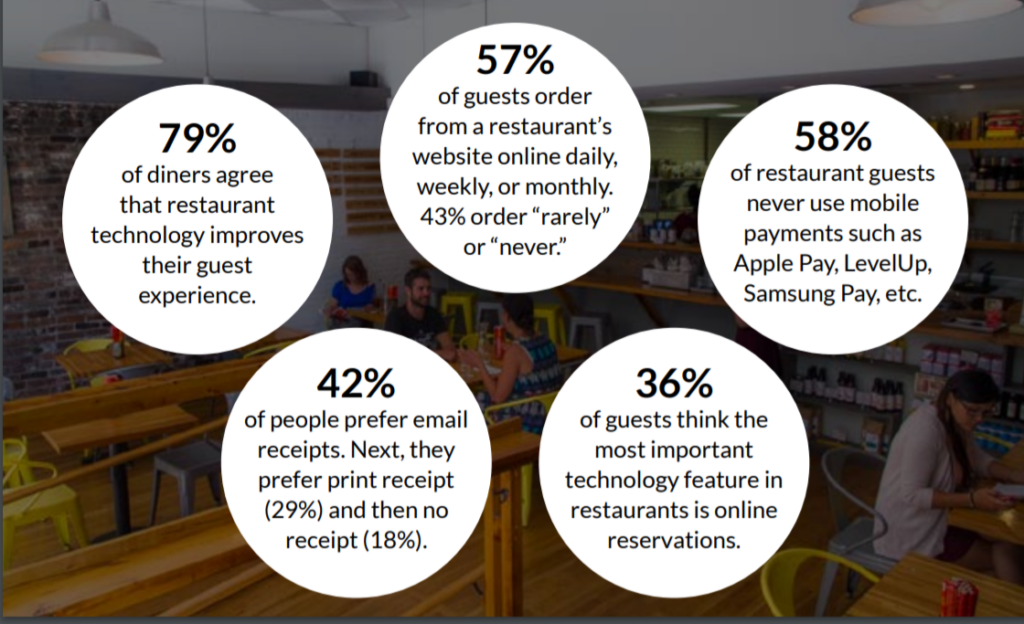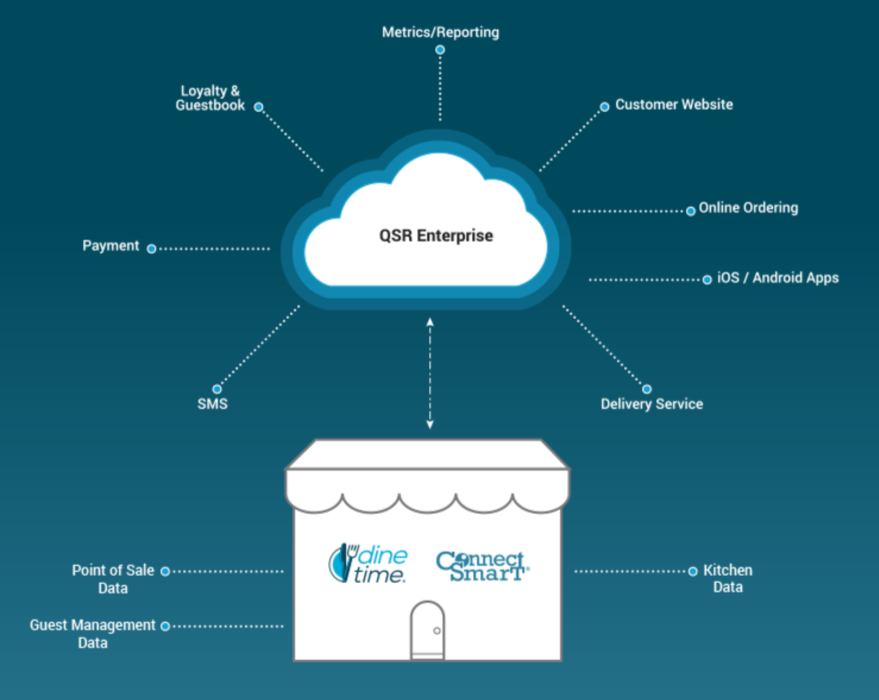Trends are funny: some come and go but others like using digital restaurant technology are here to stay. Last year Toast, a restaurant POS company, put out a 2016 Restaurant Technology Report, which noted that 79% of restaurant diners who use restaurant technology apps and platforms say the apps improve their experience as a customer of the establishment. This stat alone should be convincing enough of where the restaurant industry and many other are headed. Shake Shack noted in a WSJ CIO article that they are investing in mobile ordering apps which target growing customer demand for shorter wait times, for instance. This trend is part of a broader technology push in digital tools aimed at improving back-end systems, like inventory, invoicing and other internal processes as well. To further back up this trend, OpenTable’s Technology and Dining Out 2015 report, found that “85 percent of diners wish they knew how long the wait for a table would be; 83 percent would love to add their names to waitlist before arriving.”
Bottom line take away: Restaurant patrons (especially millennials) want on-demand conveniences of mobile technology to be incorporated within their eating experiences. As a food establishment operator, the only way to stay ahead of the technology curve (as well their competitors) is to be agile and adapt.
How Using interconnected technologies help Customer Experiences
If you’re curious about what technology solutions should be added to your restaurant to make it more profitable, you may find that one exact answer or tool will not fit for every operation. In reality, there is a multitude of interconnecting software technologies systems that form the restaurant of today (and tomorrow). This interconnectivity is vital because it will actually form the foundation of the guest purchasing experience. Now many restaurants are looking to apps to add or supplement this experience. While apps can certainly be part of the arsenal to increase customer satisfaction, they cannot be the only solution that adds to the customer’s experience. On an app, a diner can read reviews, check out the menu, look at wait times, reserve a table, put in an order, get in line and other things. But these apps can not do it all alone.
For your restaurant to bridge the gap in this new connected shopping world, you need a backend API that will speak and sync seamlessly to the technology pieces throughout the systems and operations architecture of your restaurant. Think of your Restaurant API as a communication hub for all of your software. Your loyalty programs, your waitlist, your online ordering system, your delivery enablement partners, guest management platform, and your kitchen food prep times — everything talks to each other throughout the API you choose to implement.
 Your Point Of Sale (POS) Integrations
Your Point Of Sale (POS) Integrations
The next technology piece to think about is having your POS system, which allows a seamless integration with other technology stacks, within the restaurant. A POS that functions with your API will talk and inform your other software. As an example, when your POS talks to your kitchen display system, food will automatically route based on the rules you have already set or commanded as ordered. There are several applications that could be implemented to add automation to the kitchen, table management, and more. Within a smart technology connected restaurant, you can begin to track the data you might otherwise lose. This may include features like guest management metrics that may help to improve operations. Another example, a restaurant customer who orders delivery would be counted as a visit when your eatery is connected to those on-demand food delivery systems because choosing the delivery option on your app would still capture the diners information. You may also decide to take advantage of its built-in tailor-made upselling options for individual orders – the same way Amazon.com offers suggested products based on past purchases.
The power of the data you can collect increases exponentially when you connect more systems in your restaurant. Not all technology will be utilized in every establishment, and that’s okay. It’s important to remember that the more connected technology solutions you choose, the more seamless the guest experience will be.
Putting together the Restaurant Technology Stack
People have grown accustomed to the convenience of technology and the mobile phone has pushed this forward. For instance, in a technology connected restaurant: a patron searches for restaurant options on a consumer app from their smart phone. From there, they have the ability to view wait times, locate a table at a popular NYC restaurant, then jump on the wait list. This data can be synced to the cloud, then via the API is then pushed down to the restaurant. Now prior to that guest’s arrival, a guest management platform can gather plenty of info on the dinner for the hostess. They learn about meal preferences, seating preferences, and even any potential food allergies.
Once the group or party arrives, checks in with the host, and is seated – the server can take over. They plug in the order into the POS, which then sends it to the kitchen based on rules created during implementation. During the meal preparation stage, the server is able to track the progress from a single display that is connected to the kitchen. This allows the waiter to know the status of every single item on all orders. Now once the order is finished and gets marked as delivered to the table, the guest management platform updates to inform the host in real time (by the minute even) on a table status for every party in the dining room areas.
And these are some of the basics that forward thinking restaurant chains are implementing. Start taking your guest experience to the next level by integrating with third-party online and mobile ordering platforms, ride sharing apps, pay-at-the-table-kiosks, and a bunch of other third party technology add-on-integrations. The cloud technologies are changing how restaurant operations management works, automating many back-office bookkeeping duties and being used to make dining out more convenient to build a stronger relationship with your customers, to increase your bottom line by saving time and gathering more data.
Conclusion
Whether you are a large chain that needs all of the bells and whistles, or an independent restaurant looking that is looking for specific solutions, technology integrations are where it all happens. Bookkeeping Chef has multiple partners in the restaurant technology industry and can help recommend some solutions to drive improvements your restaurant’s bottom line. Contact us for a consultation today.



